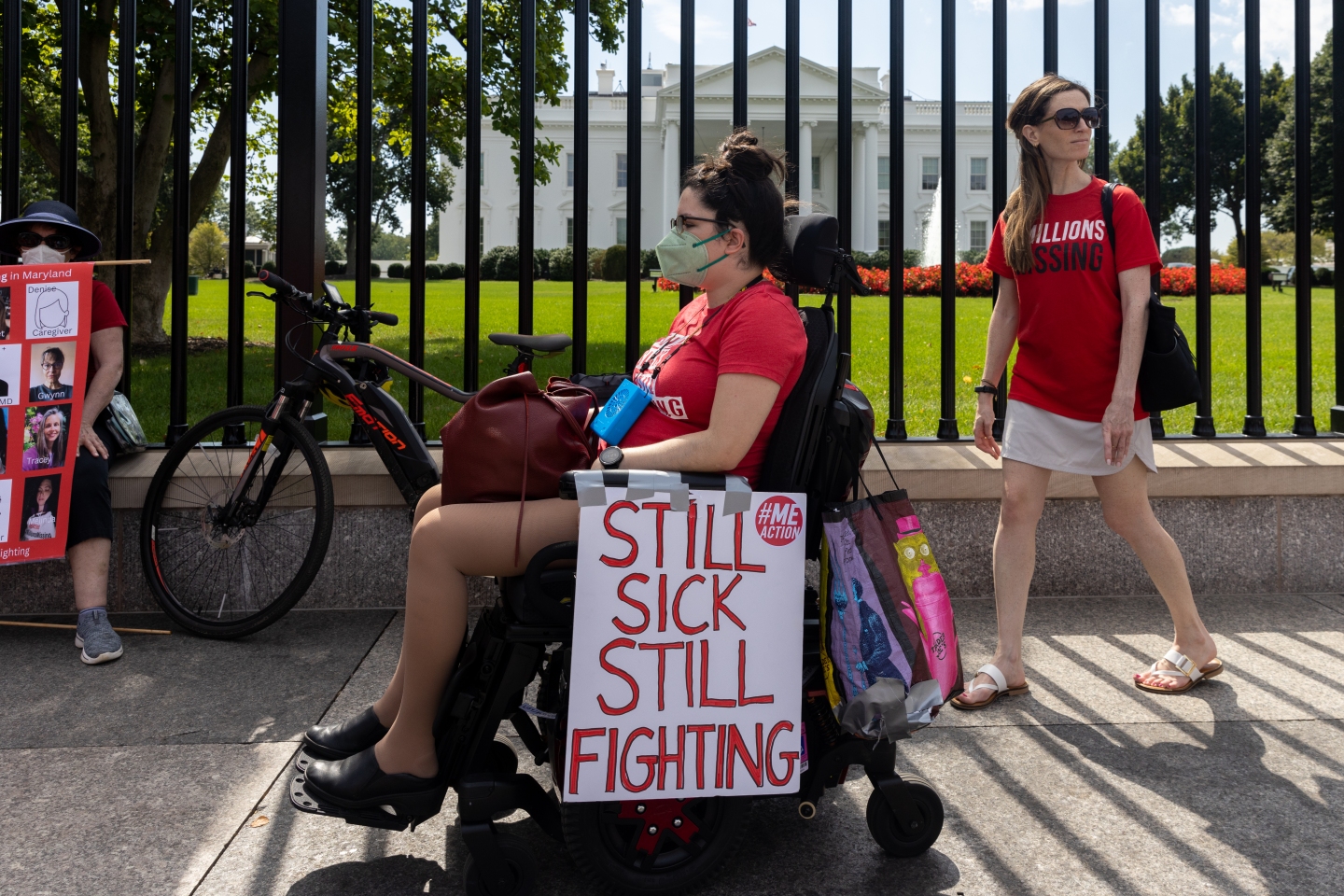“长期新冠”越来越常见,二成患者两年后仍然有症状

新冠肺炎的后遗症会持续多久呢?
这是所有新冠患者都操心的问题。虽然新冠疫情已经快三年了,但是关于这个问题的答案却是很有限的。不过生活在武汉的康复患者无疑是最清楚的,因为如果有后遗症的话,他们肯定承受的时间最久。
今年9月15日,一篇发表在《美国医学协会杂志》(Journal of the American Medical Association)上的研究就探讨了这个问题。
中国陆军军医大学和武汉火神山医院的研究人员随访了近2,000名新冠肺炎康复者,他们都曾经在2020年2月至4月间在武汉的各大医院接受治疗。研究发现,新冠后遗症的大多数长期症状——例如疲劳、胸闷、焦虑和肌肉疼痛等,都在出院后的第一年到第二年间得到了减轻和缓解。
但是也有例外——如果患者出现了呼吸困难,那这种症状就似乎无法随着时间减轻。研究人员还发现,住过ICU的病人也更容易出现长期症状。
很多新冠康复者自述仍然一直有疲劳感,这一点与埃博拉和非典等病毒的康复者十分类似。非典是一种2003年爆发的冠状病毒,其致死率要远高于新冠病毒。研究人员写到,非典康复者的疲劳可以持续四年之久。
研究人员表示,他们的研究对象主要是新冠病毒原始株的康复者,所以其研究结果可能适用也可能不适用于包括奥密克戎在内的其他变异毒株。
根据美国人口普查局(U.S. Census Bureau)在今年夏天收集的数据,在美国成年新冠病毒感染者中,有近20%的人自述康复后出现了“长期新冠”症状,也就是各种久治不愈的后遗症。
“长期新冠”是指在感染消失后,仍然在相当长的时间内持续存在的症状,但是目前关于“长期新冠”尚无一个被广泛接受的定义。
很多专家认为,“长期新冠”的最佳定义,应该是由新冠肺炎引发的一种慢性疲劳综合征样疾病,与其他病毒后综合征类似。而器官损伤和其他重症监护后综合征则不应该被定义为“长期新冠”。
不过很多新闻从业者,以及很多向美国人口普查局以及其他机构自述有“长期新冠”症状的人,很可能没有认识到这其中的区别。这意味着真正得了“长期新冠”的人数很有可能被高估了。(财富中文网)
译者:朴成奎
新冠肺炎的后遗症会持续多久呢?
这是所有新冠患者都操心的问题。虽然新冠疫情已经快三年了,但是关于这个问题的答案却是很有限的。不过生活在武汉的康复患者无疑是最清楚的,因为如果有后遗症的话,他们肯定承受的时间最久。
今年9月15日,一篇发表在《美国医学协会杂志》(Journal of the American Medical Association)上的研究就探讨了这个问题。
中国陆军军医大学和武汉火神山医院的研究人员随访了近2,000名新冠肺炎康复者,他们都曾经在2020年2月至4月间在武汉的各大医院接受治疗。研究发现,新冠后遗症的大多数长期症状——例如疲劳、胸闷、焦虑和肌肉疼痛等,都在出院后的第一年到第二年间得到了减轻和缓解。
但是也有例外——如果患者出现了呼吸困难,那这种症状就似乎无法随着时间减轻。研究人员还发现,住过ICU的病人也更容易出现长期症状。
很多新冠康复者自述仍然一直有疲劳感,这一点与埃博拉和非典等病毒的康复者十分类似。非典是一种2003年爆发的冠状病毒,其致死率要远高于新冠病毒。研究人员写到,非典康复者的疲劳可以持续四年之久。
研究人员表示,他们的研究对象主要是新冠病毒原始株的康复者,所以其研究结果可能适用也可能不适用于包括奥密克戎在内的其他变异毒株。
根据美国人口普查局(U.S. Census Bureau)在今年夏天收集的数据,在美国成年新冠病毒感染者中,有近20%的人自述康复后出现了“长期新冠”症状,也就是各种久治不愈的后遗症。
“长期新冠”是指在感染消失后,仍然在相当长的时间内持续存在的症状,但是目前关于“长期新冠”尚无一个被广泛接受的定义。
很多专家认为,“长期新冠”的最佳定义,应该是由新冠肺炎引发的一种慢性疲劳综合征样疾病,与其他病毒后综合征类似。而器官损伤和其他重症监护后综合征则不应该被定义为“长期新冠”。
不过很多新闻从业者,以及很多向美国人口普查局以及其他机构自述有“长期新冠”症状的人,很可能没有认识到这其中的区别。这意味着真正得了“长期新冠”的人数很有可能被高估了。(财富中文网)
译者:朴成奎
How long do long COVID symptoms linger?
It’s the question on the mind of millions of sufferers. Less than three years into the pandemic, answers are limited. But those in Wuhan, China—where the outbreak began in late 2019—would know best, as they’ve lived with the virus’s repercussions the longest.
A new study published on September 15 in the Journal of the American Medical Association sheds some light on the matter.
Researchers at Army Medical University in Chongqing, China, and Wuhan Huoshenshan Hospital in Wuhan, China, interviewed nearly 2,000 COVID survivors, all of whom were treated for the illness at Wuhan hospitals from February through April 2020. They found that the long-term symptoms of most—like fatigue, chest tightness, anxiety, and myalgia—lessened, then resolved between the first- and second-year anniversaries of their discharge.
The exception: patients with dyspnea (difficulty breathing), whose symptoms didn’t seem to resolve with time. Patients who had been admitted to the intensive care unit were also more likely to have persistent symptoms, researchers found.
The ongoing fatigue described by many COVID survivors is similar to that described by survivors of other diseases like Ebola and SARS, a coronavirus much more fatal than COVID-19 that caused epidemics in 2003. Fatigue in SARS survivors has been reported to last as long as four years, researchers wrote.
The study examined survivors of the initial strain of Omicron and may or may not be applicable to other strains, including Omicron, the authors emphasized.
Nearly 20% of American adults who’ve had COVID—an estimated 50 million Americans—report having long COVID symptoms after their infection resolves, according to data collected by the U.S. Census Bureau this summer.
Long COVID is roughly defined as symptoms that persist or appear long after the initial COVID infection is gone, but a consensus definition has not yet been broadly accepted.
Many experts contend that long COVID is best defined as a chronic-fatigue-syndrome-like condition that develops after COVID illness, similar to other post-viral syndromes. Other post-COVID complications, like organ damage and post-intensive-care syndrome, should not be defined as long COVID, they say.
But many of those writing reports, and self-reporting long COVID to the Census Bureau and other entities, likely aren’t making such a distinction. This means the number of those with true long COVID is likely overestimated.













